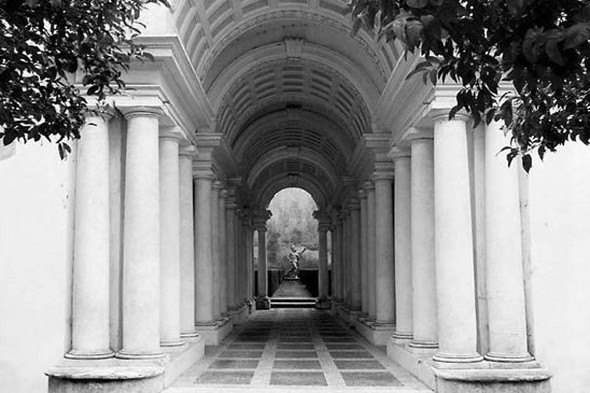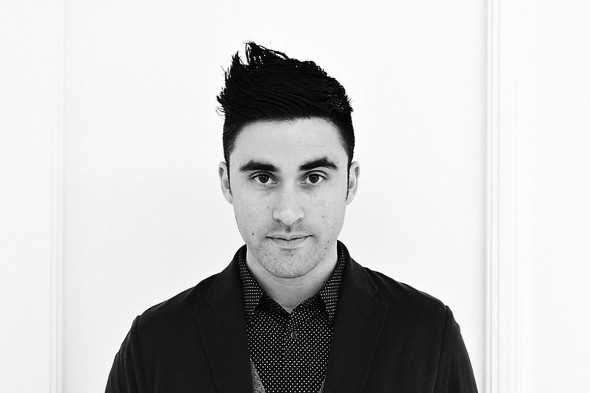Rome Prize winner eyes optical illusions
About 30 artists and humanities scholars each year receive the Rome Prize from the American Academy in Rome, with an invitation to “immerse themselves in the Academy community” while pursuing their work in the historic heart of the city.
Thomas Kelley plans to go one step further by making Rome the subject of his work. He’ll spend his 11-month residency, beginning in September, cataloguing optical illusions in the city’s Baroque and Renaissance architecture.
Kelley, visiting assistant professor of architecture since 2009, teaches a studio class called “Exactly Wrong” on the use of “visual error” — which he defines as the architect’s use of mathematically precise optical devices, such as forced perspective, juxtapositions of scale, or trompe l’oeil painting, that cause the viewer to look twice.
Among local examples, he names the famous Monadnock Building at 53 W. Jackson St., with masonry broader at its base than its top, making the building look taller. The curving shape of Chase Tower, 10 S. Dearborn St., is another example, as well as UIC’s University Hall, with its unexpected graduation of floors from the bottom up.
“One of my favorite architectural illusions in Chicago would have to be Mies van der Rohe’s treatment of the corner, specifically in the 860-880 Lake Shore Drive Apartments. By painting the I-beam a matte black, he erodes the rectilinear edge,” Kelley says.
Illusion can be “a quick way to make something grand or provocative,” but contemporary architecture has become too pragmatic for that, he says.
High definition in video and photography can discourage people from seeing intuitively rather than literally, reducing attention spans for viewing architecture, he adds.
“Architecture is a visual effects machine – or at least it was once … The methods by which we now choose to represent the real have aimed too high,” Kelley wrote in his Rome Prize proposal, asserting that Rome still maintains “a lineage of optics.”
He mentions a favorite work of forced perspective in Rome, the Palazzo Spada. The 17th century palace has a corridor with a rising floor and diminishing columns, making it appear to be nearly five times its actual length of 26 feet. Similarly, a statue at the end of the corridor appears to be adult-sized when viewed from the entrance, but is really child-sized.
“I think what’s important with these illusions is they’re not concerned with the autonomy of architecture, or form for form’s sake. They’re trying to produce new subjects and new audiences,” Kelley says.
“A variety of optical illusions have been exhausted to the point where you can’t really do anything new. So for me, the point is to deploy it in a new context.”
Kelley researched visual error this academic year as a fellow at the University of Buffalo, where he organized a January symposium, “On Error,” that included UIC faculty members Sarah Blankenbaker, Jimenez Lai, Sean Lally, Kelly Bair and Paul Preissner.
He also presented an exhibition, “Wrong Chairs,” for which he built seven Windsor chairs based on 18th- and 19th-century drawings, exaggerating their proportions to yield visual errors.
Kelley says he plans to return to Chicago after his Rome fellowship and continue work with his two-person practice, Norman Kelley.


